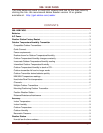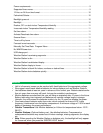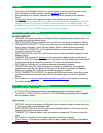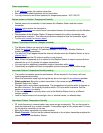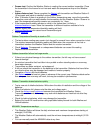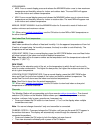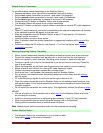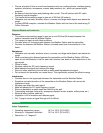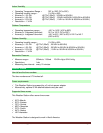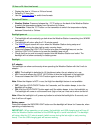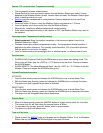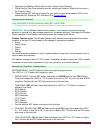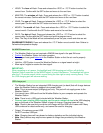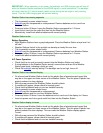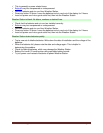
La Crosse Technology, Ltd. Page 8
Choose a location 6 feet or more from electronics such as cordless phones, wireless gaming
systems, televisions, microwaves, routers, baby monitors, etc., which can prevent signal
reception.
Be aware of electrical wires and plumbing within a wall. This will interfere with RF (radio
frequency) signal reception.
The maximum transmitting range in open air is 200-feet (60 meters).
Obstacles such as walls, windows, stucco, concrete, and large metal objects can reduce the
range.
For best WWVB reception, orientate the Weather Station with the front of the back facing Ft.
Collins Colorado.
Distance/Resistance/Interference
Distance:
The maximum transmitting range in open air is over 200-feet (60 meters) between the
outdoor transmitter and the Weather Station.
This range is in open air with ideal conditions.
Consider what is in the signal path between the Weather Station and the transmitter.
Consider the distance the Weather Station is located away from other electronic in the
home.
Resistance:
Obstacles such as walls, windows, stucco, concrete, and large metal objects can reduce the
range.
When considering the distance between the transmitter and the Weather Station (200 feet
open air) cut that distance in half for each wall, window, tree, bush or other obstruction in the
signal path.
Closer is better.
Windows reflect the RF (radio frequency) signal.
Metal absorbs the signal and reduces the range.
Stucco is often attached to the wall with a metal mesh that absorbs the signal.
Do not mount the transmitter on a metal fence. This significantly reduces the effective range.
Interference:
Consider items in the signal path between the transmitter and the Weather Station.
Sometime a simple relocation of the transmitter or the Weather Station will correct the
interference issue.
Windows can reflect the radio signal.
Metal will absorb the RF (radio frequency) signal.
Stucco is backed by a metal mesh that holds it to the wall.
Transmitting antennas (ham radio, emergency dispatch center, airports, military base etc.)
Electrical wires (utilities, cable etc.)
Vegetation is full of moisture and reduces signal.
Dirt: Trying to receive a signal through a hill is difficult.
Accuracy
Indoor Temperature
Operating temperature range = 32 F to 122 F (0C to 50C)
Accuracy ± 2 degrees Fahrenheit 32 F to 122 F (0C to 50C)
Resolution = 0.1 degree F



